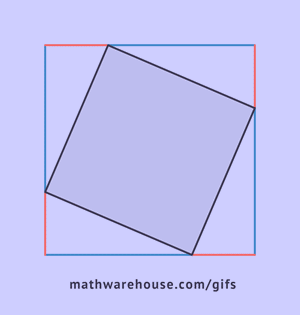What first stood out to me after reading this section of Crest of the Peacock, was how expansive the world of mathematics can be, but also how much there is I haven't explored of it. Before reading this section, I read the question on the blog "how could one state a general mathematical principle in a time before the development of algebra and algebraic notation?", and at first I couldn't come up with anything. I think this is because I've never been taught of any other way than using algebraic notation, and teachers never asked me to come up with ways to do so! It seems that the Babylonians used a terminology instead of symbols though, using terms such as ush, sag, lagab, sukud, asha, and sahar to represent terms such as length, width, and square. Instead of saying XY = X*Y they would say Asha (area) = Ush (length) multiplied by Sag (breadth/width). In a way, using words instead of notation, turns the word into a notation of sorts --an odd paradox.
I believe that mathematics is all about generalizations and abstractions. I see generalizations in mathematics in the forms of rules, equations, and formulas. Generalizations often allow users to have a base-level (instrumental) understanding of how to do basic arithmetic and find relationships within each problem. However, abstractions give the individual a wider scope of the world, and the applications math can have in the real world. Abstractions in math reveal a deeper understanding and need to apply the generalities in a more focused sense. An example would be from one of the readings we had: giving an area question with differing units. The generalization would be knowing how formulas work, knowing that the area of a rectangular space is length x width, but the abstraction comes from the deeper understanding of conversion so the units are all uniform. This also has real world application!
The first that came to mind that mind that could be explained without algebra would be areas of mathematics that rely heavily on visualization. Pulling from the readings, geometry would be one that could be incorporated without algebra (although it would be difficult). The hindrance would come from not having algebraic notations, but the overall lessons could be taught visually, as a core concept of geometry is to use visualization. Another area could be basic algebra for younger students, like finding x or y, using basic arithmetic. A visual representation using blocks for example could relay the question "If 5 - x = 2, what is x?"; 5 interlocking blocks could be on one side and 2 on the other, and the student has to find the difference.






